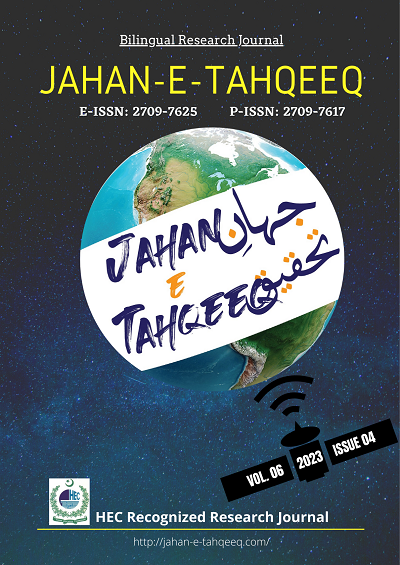”منطِقَ الطیر،جدید “اور ”دشتِ سُوس “میں متصوفانہ عناصرکاتقابلی مطالعہ
##plugins.themes.academic_pro.article.main##
Abstract
Mysticism is the aspect of religion not only present in Islam but more or less found in almost every religion. In Islamic mysticism, notion of "wahdat al-wujood" unity of existence, is often attributed to Sufi mystics like Ibn ul Arabi. it is the idea that there is only one true existence, and everything in the universe is a manifestation of this singular reality, which is God (Allah). This concept emphasizes the unity of all creation and the idea that everything is connected to and emanates from the divine source. It asserts that is only one ultimate reality, and all existence is a reflection or expression of that singular essence
"wahdat ul-wujood" has been embraced by most of Islamic Sufi thinkers but on the other hand it has also faced criticism and debate within the broader Islamic philosophical tradition. Ibn Arabi who is called as “Sheik E Akbar” have contributed to the development and elaboration of this concept within Islamic philosophy. In Sufism, sufi experience spiritual journey in quest for closeness to the divine and recognition of divine in all aspects of creation. This religious concept influenced Islamic culture, art and history. Urdu Novelists have also created master pieces of historical literature by use of this religious concept. Jameela Hashmi’s Dasht E Soos and Manteq ut Tair Jadeed by Mustansar Hussain Tarar are one of these kinds of master pieces. Comparison of mystic elements in both the novels has been made in this article.
##plugins.themes.academic_pro.article.details##

This work is licensed under a Creative Commons Attribution-NonCommercial-NoDerivatives 4.0 International License.

